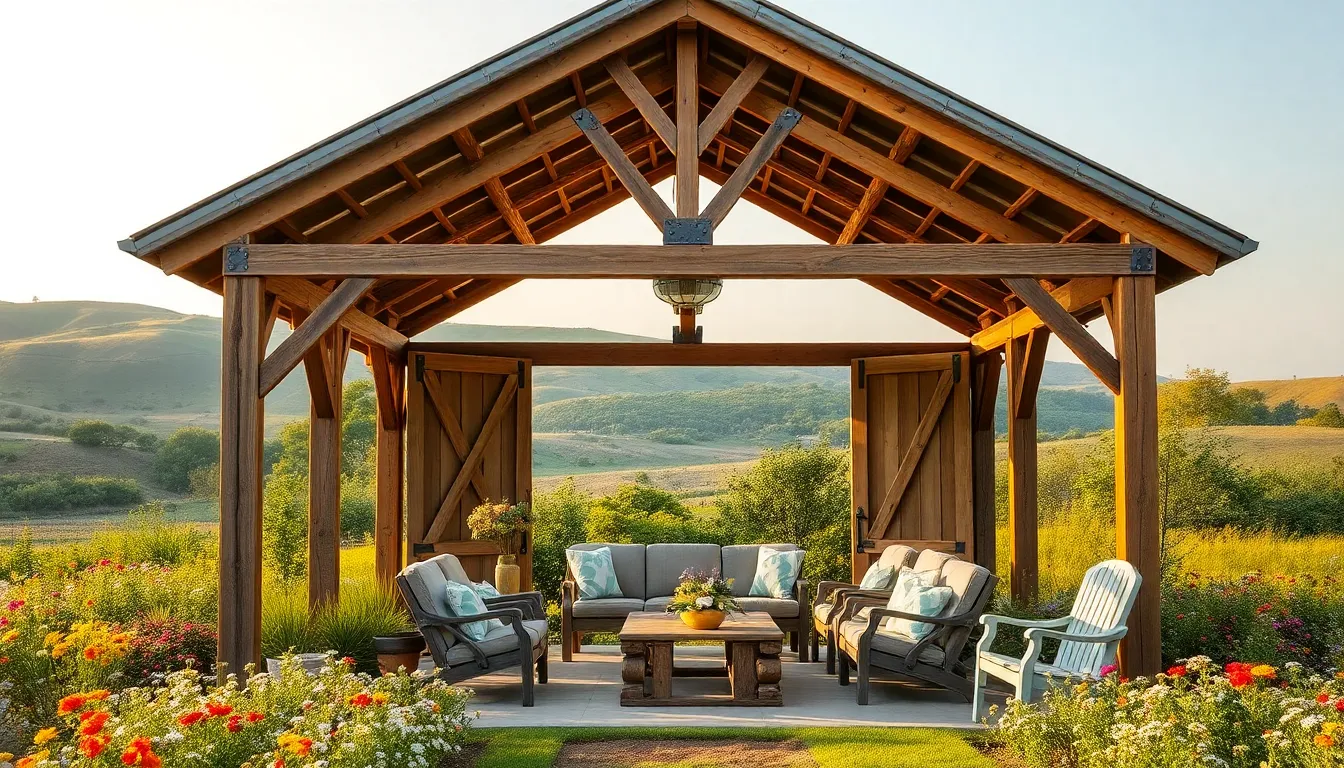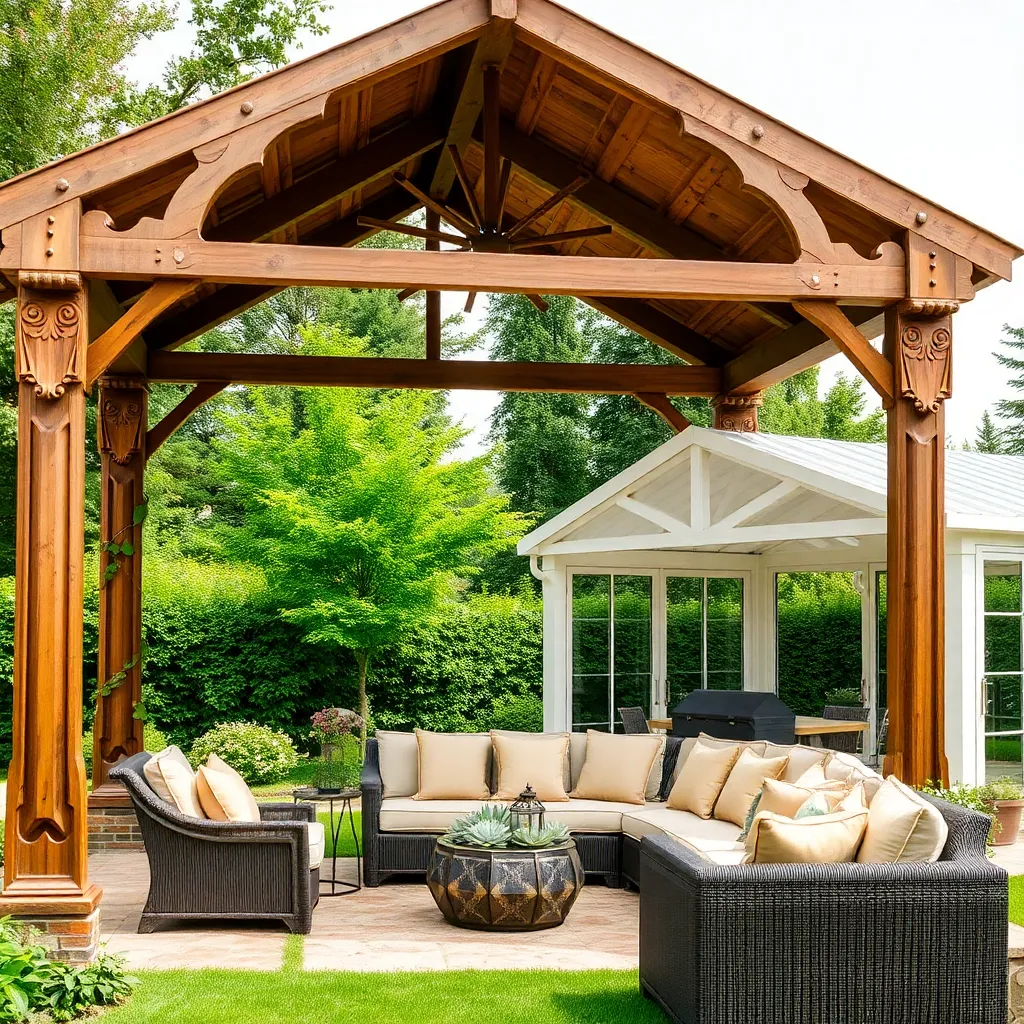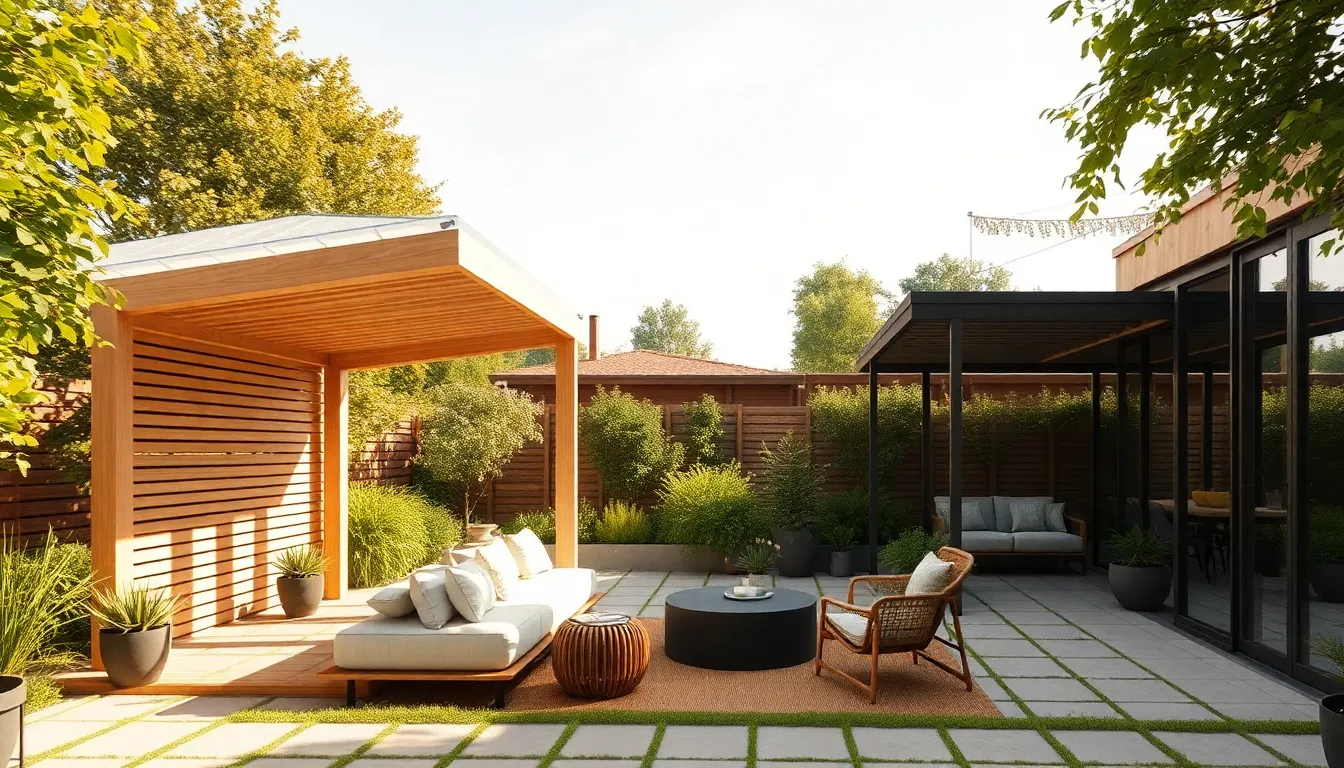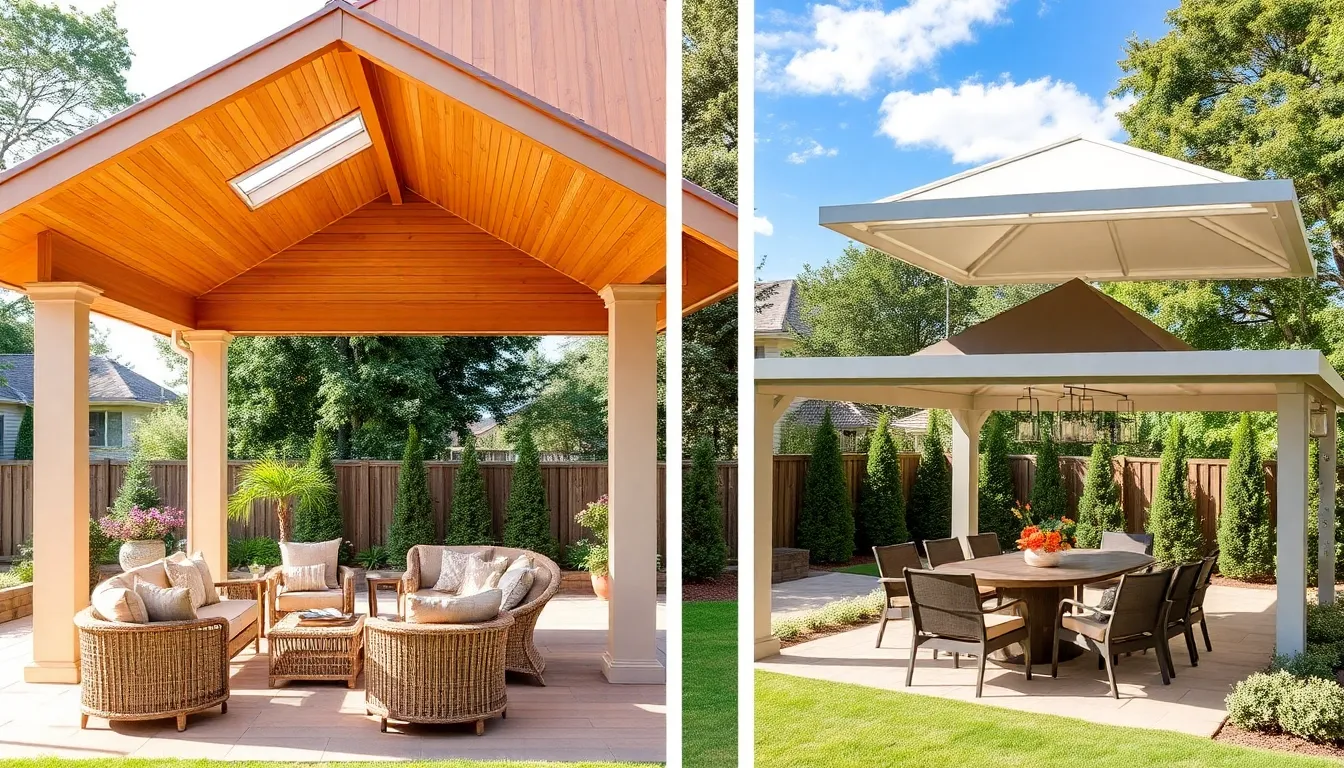Imagine stepping into your backyard to find a charming rustic pavilion that instantly transforms your farmhouse garden into a serene retreat. Whether you’re new to outdoor design or a seasoned pro, creating an inviting space that blends natural beauty with functionality can elevate your home’s allure. This enchanting fusion of rustic charm and practicality is within everyone’s reach, offering a unique opportunity to enhance your outdoor living experience.
In this article, we’ll explore 14 stunning rustic pavilion ideas that perfectly complement farmhouse aesthetics. From selecting the right materials to incorporating thoughtful design elements, you’ll discover actionable insights to craft a picturesque haven that reflects your style. Get ready to unlock the potential of your outdoor space with designs that inspire warmth and simplicity.
Choosing Authentic Rustic Designs
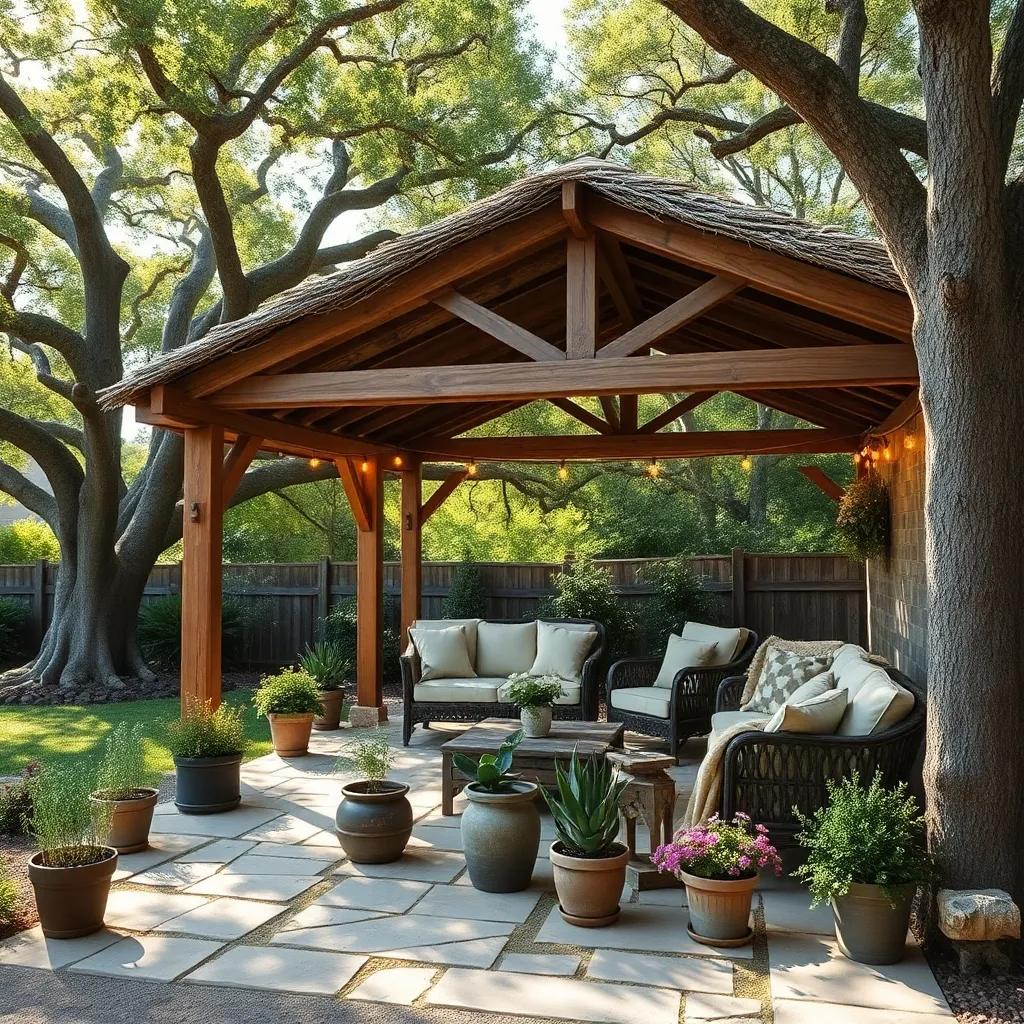
To create an authentic rustic pavilion, start by selecting materials that naturally blend with the environment, such as reclaimed wood or stone. Cedar and pine are excellent choices for their durability and aesthetic appeal, while slate or gravel flooring can provide a sturdy, weather-resistant base. For a truly rustic feel, consider using untreated wood to let it weather naturally over time, adding to the pavilion’s charm.
Incorporate design elements that emphasize simplicity and functionality, such as exposed beams and a pitched roof to enhance the rustic aesthetic. Consider adding a stone fireplace or a fire pit for warmth and ambiance, making the space usable year-round. For a more advanced touch, incorporate metal accents like wrought iron brackets or copper roofing for a touch of elegance and durability. These features not only enhance the rustic appeal but also ensure the pavilion remains a cozy retreat in any season.
Incorporating Natural Wood Elements
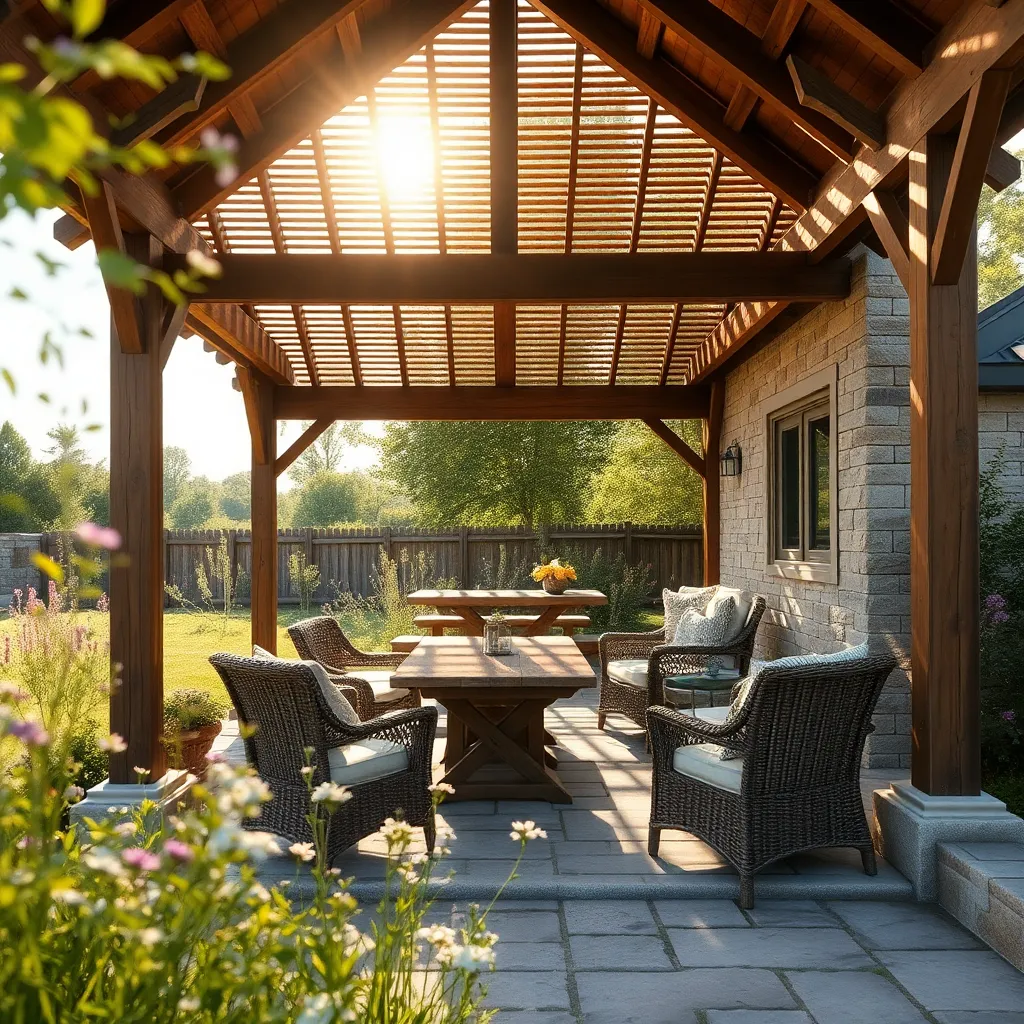
Incorporating natural wood elements into your rustic pavilion not only enhances its aesthetic appeal but also ensures durability and harmony with the surrounding environment. For beginners, using locally sourced wood like cedar or pine can be a great start due to their natural resistance to weathering and pests. More experienced builders might consider using reclaimed wood for a truly authentic rustic feel, ensuring it’s properly treated to withstand outdoor conditions.
Designing your pavilion with exposed beams and natural finishes can highlight the beauty of wood and add character. Ensure all wood surfaces are sanded smooth and sealed with a high-quality outdoor wood sealant to protect against the elements. For a solid structure, aim for support beams that are at least 6×6 inches in dimension, which will provide both stability and a substantial visual impact. Integrating wooden trellises or latticework can also add depth and allow for climbing plants, enhancing the natural rustic charm.
Maximizing Open-Air Ambiance
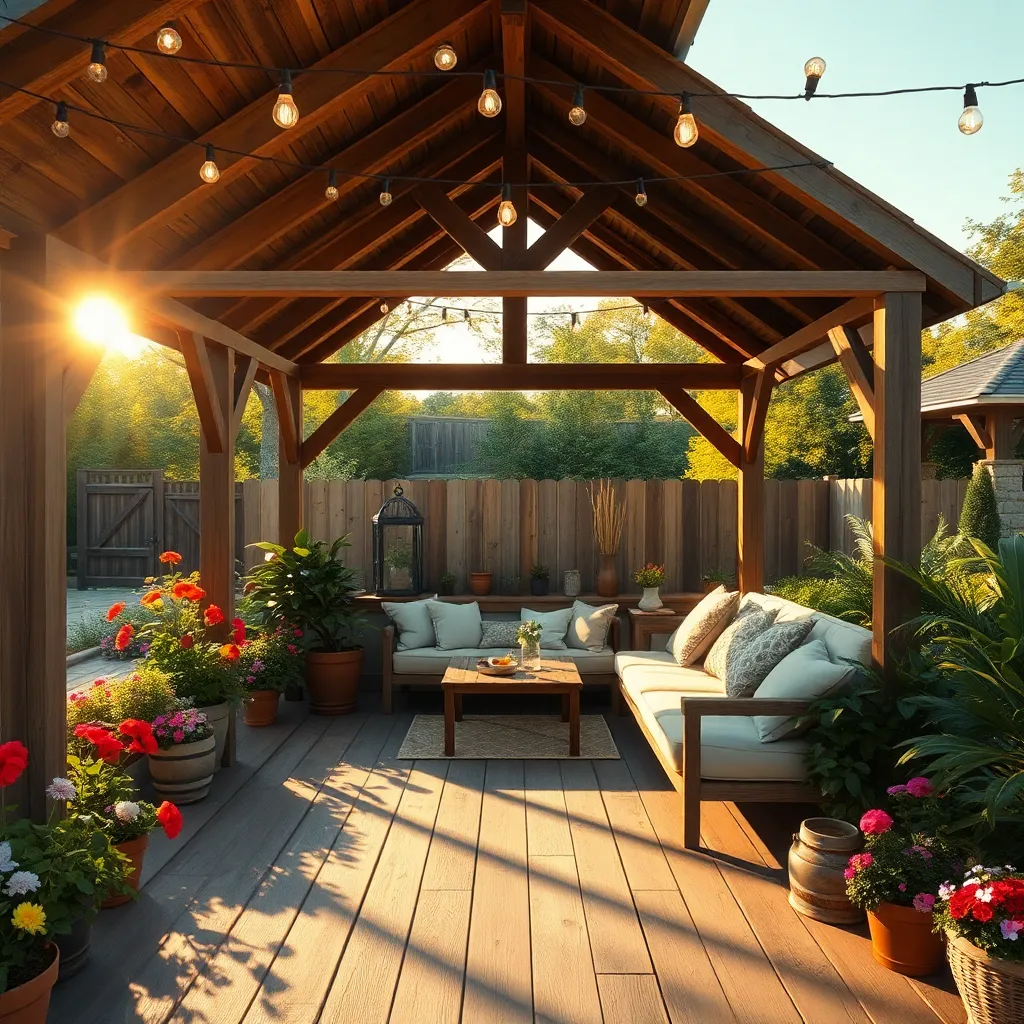
To maximize open-air ambiance in your rustic pavilion, consider integrating natural stone flooring or gravel paths to complement the wood elements. These materials not only enhance the rustic charm but also provide durability and low maintenance. For beginners, opting for gravel is an excellent choice due to its ease of installation. Advanced gardeners might explore flagstone or slate for a more polished look. Ensure pathways are at least 3 feet wide to allow for comfortable movement and create a seamless flow with the surrounding landscape.
Lighting plays a crucial role in enhancing the atmosphere of your outdoor space. Use solar-powered lanterns or string lights to create a warm, inviting glow without the need for wiring. For a more sophisticated touch, incorporate candle-lit lanterns or LED spotlights to highlight architectural features or nearby garden beds. Consider hanging lights at varying heights to add depth and visual interest, and ensure that fixtures are weather-resistant for longevity. These small additions can transform your pavilion into a cozy retreat, perfect for evening relaxation or gatherings.
Integrating Garden Views Seamlessly
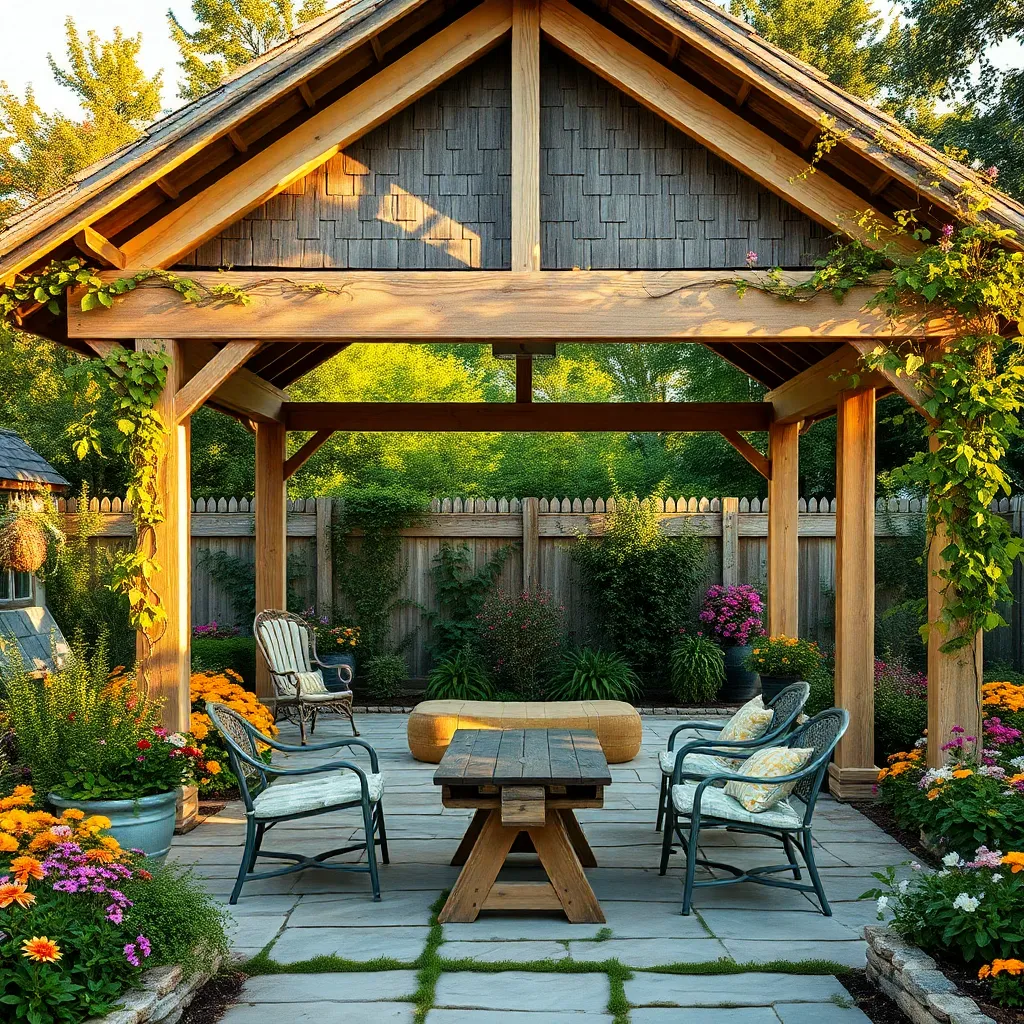
To seamlessly integrate garden views into your rustic pavilion, consider using open frameworks and natural materials that complement your garden’s aesthetic. Choose materials like reclaimed wood or stone that blend with the environment and allow for expansive openings without obstructive barriers. For beginners, start by opting for a simple post-and-beam construction that uses durable wood such as cedar or pine, which naturally resists weathering.
Advanced gardeners can enhance their pavilions with thoughtful design elements such as strategically placed latticework or pergolas that frame specific views and create focal points. Incorporate large, clear, or frosted glass panels to protect against the elements while maintaining visual connectivity to the garden. Consider dimensions that allow for comfortable seating arrangements and pathways, ensuring the pavilion becomes a seamless extension of your outdoor living space.
Enhancing Farmhouse Charm with Details
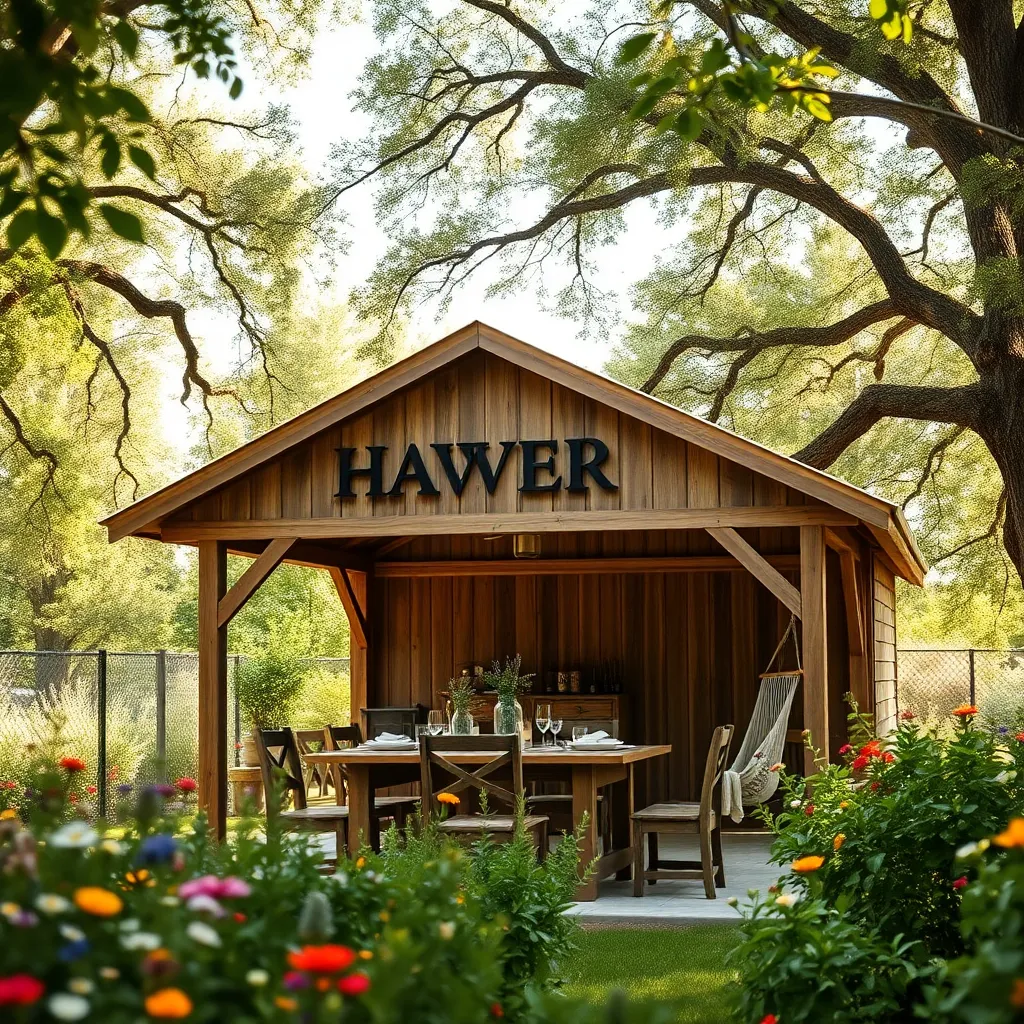
To enhance farmhouse charm, consider incorporating natural materials such as reclaimed wood or weathered stone for your pavilion structure. These materials not only add rustic appeal but also ensure durability. Beginners can start by using wooden beams for a simple, yet effective design. For those seeking advanced aesthetics, consider adding a stone fireplace or a shingled roof for a cozy, inviting atmosphere.
Design elements like wrought iron accents can further elevate the farmhouse style. Opt for intricate ironwork in features such as railings or light fixtures to add character. Ensure that any furniture is consistent with the rustic theme, such as wooden benches or vintage metal chairs. For a touch of elegance, add subtle lighting with lanterns or string lights, which can highlight the pavilion’s architectural details and create a warm ambiance during the evenings.
Selecting Durable Construction Materials
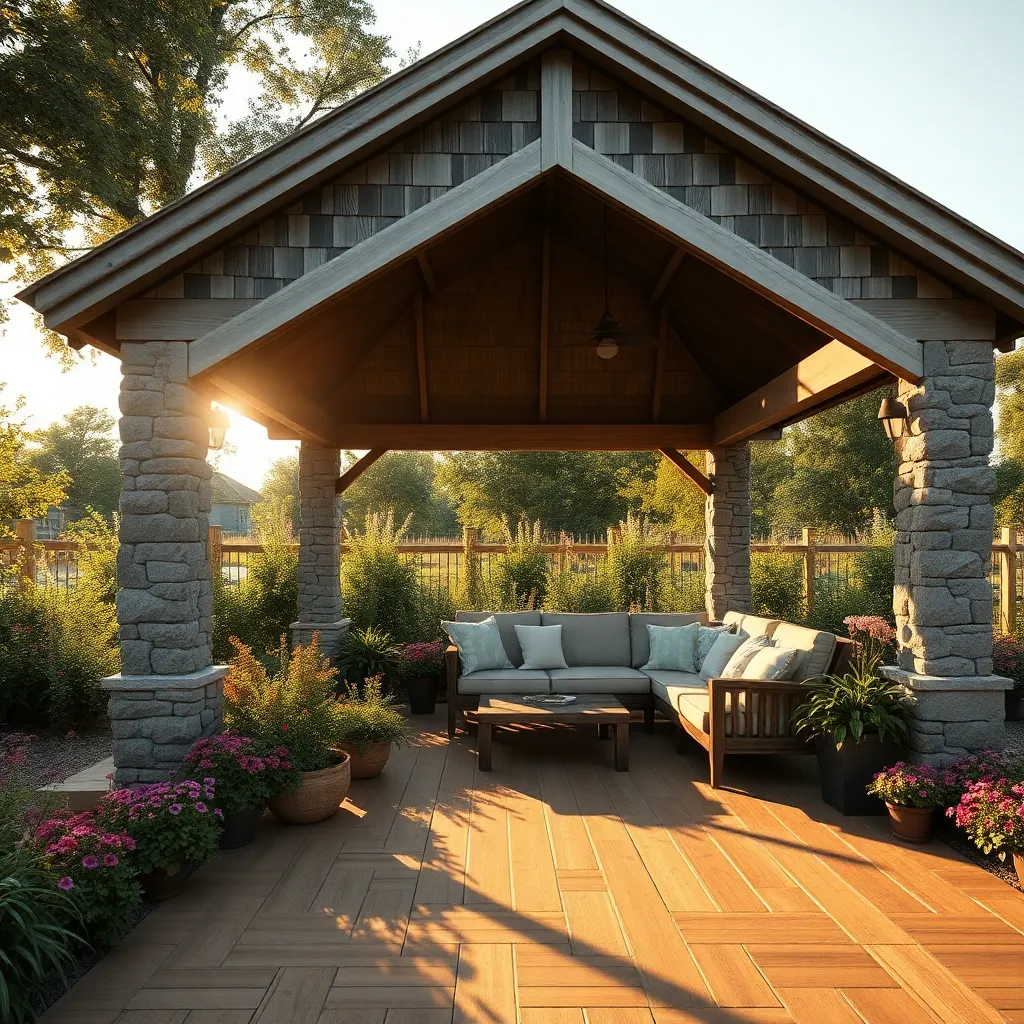
When selecting materials for a rustic pavilion, consider using natural and durable options such as cedar or redwood, which offer excellent resistance to weather and insects. These woods not only enhance the rustic charm with their natural grain and color but also require less chemical treatment, making them environmentally friendly. For those seeking a more contemporary touch, consider using metal roofing, such as corrugated steel, which adds a sleek contrast while providing durability and low maintenance.
Ensure your pavilion stands the test of time by paying attention to structural integrity and design elements. Incorporate sturdy beams and posts, ideally with a thickness of at least 6×6 inches, to support the structure effectively. For added stability and aesthetic appeal, consider using stone or brick for the foundation and base, which can blend seamlessly with farmhouse garden landscapes. Advanced builders might explore incorporating mortise and tenon joints for a traditional touch that enhances both strength and visual appeal.
Crafting Cozy Seating Arrangements

Creating a cozy seating arrangement within your rustic pavilion can transform it into a welcoming retreat. Start by selecting weather-resistant materials like teak or cedar for furniture, as these woods are not only durable but also enhance the rustic charm. Consider incorporating plush outdoor cushions in earthy tones or vibrant patterns to add comfort and style. For a touch of warmth, position a small fire pit or an outdoor heater in the center, ensuring it is compliant with safety standards and away from flammable materials.
To elevate the ambiance, integrate thoughtful design elements such as string lights or lanterns, which provide soft illumination for evening gatherings. Layering your seating with a mix of chairs, benches, and a small outdoor sofa can create a versatile space that adapts to different gatherings. For a more advanced touch, consider adding a pergola extension with climbing plants like wisteria or grapevines, which not only offers shade but also enhances the pavilion’s farmhouse aesthetic. Remember, the key is to blend functionality with style, ensuring your pavilion remains a cherished spot year-round.
Designing for Seasonal Flexibility
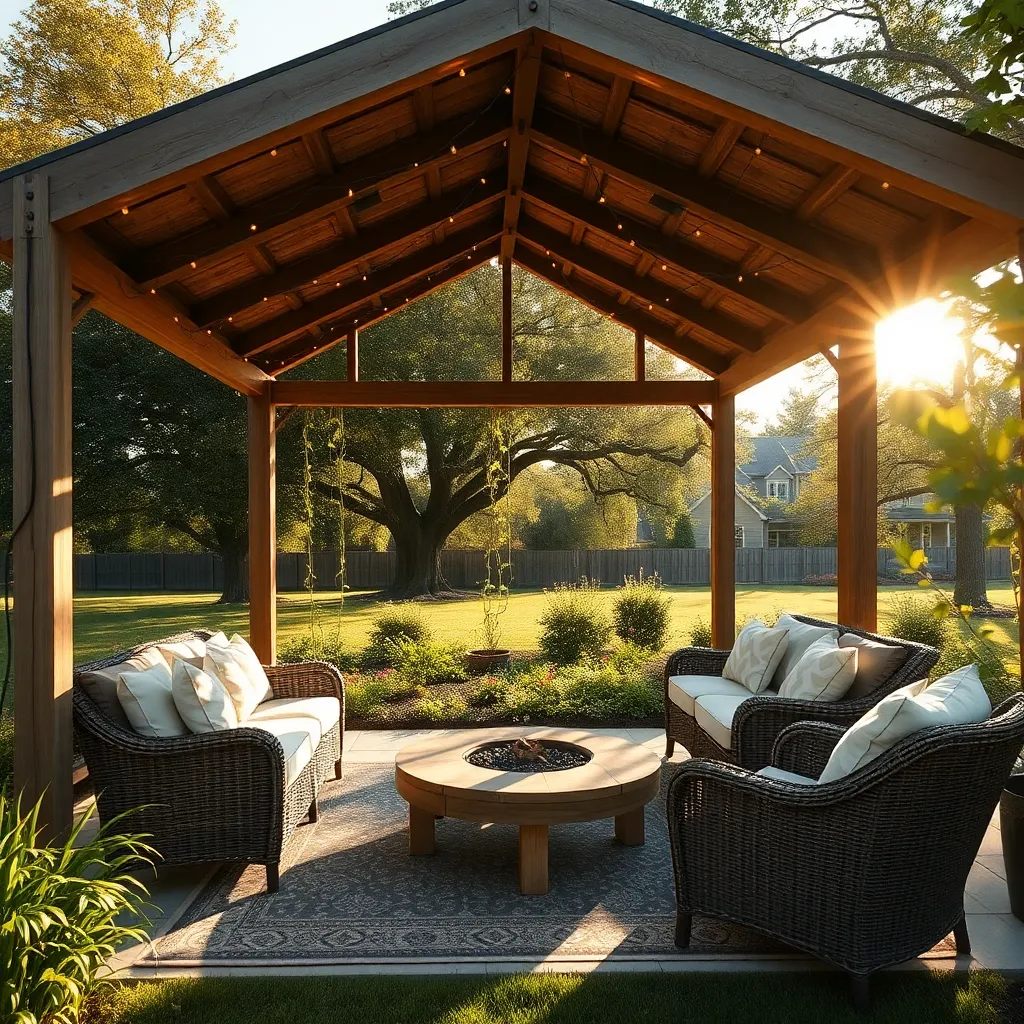
In designing a rustic pavilion for seasonal flexibility, consider incorporating adaptable elements like removable walls or adjustable screens. Choose materials such as treated wood or galvanized metal that can withstand various weather conditions. For beginners, starting with a simple frame that allows for easy installation of fabric or plastic panels can provide shelter from rain or wind.
More advanced builders might consider installing a sliding roof or retractable canopy for summer cooling and winter warmth. Integrate features like a built-in fire pit with a chimney or moveable heat lamps to extend usability into cooler months. Ensure your pavilion dimensions are at least 10×10 feet to comfortably accommodate seasonal furnishings and adjustments.
Blending Pavilion with Landscape
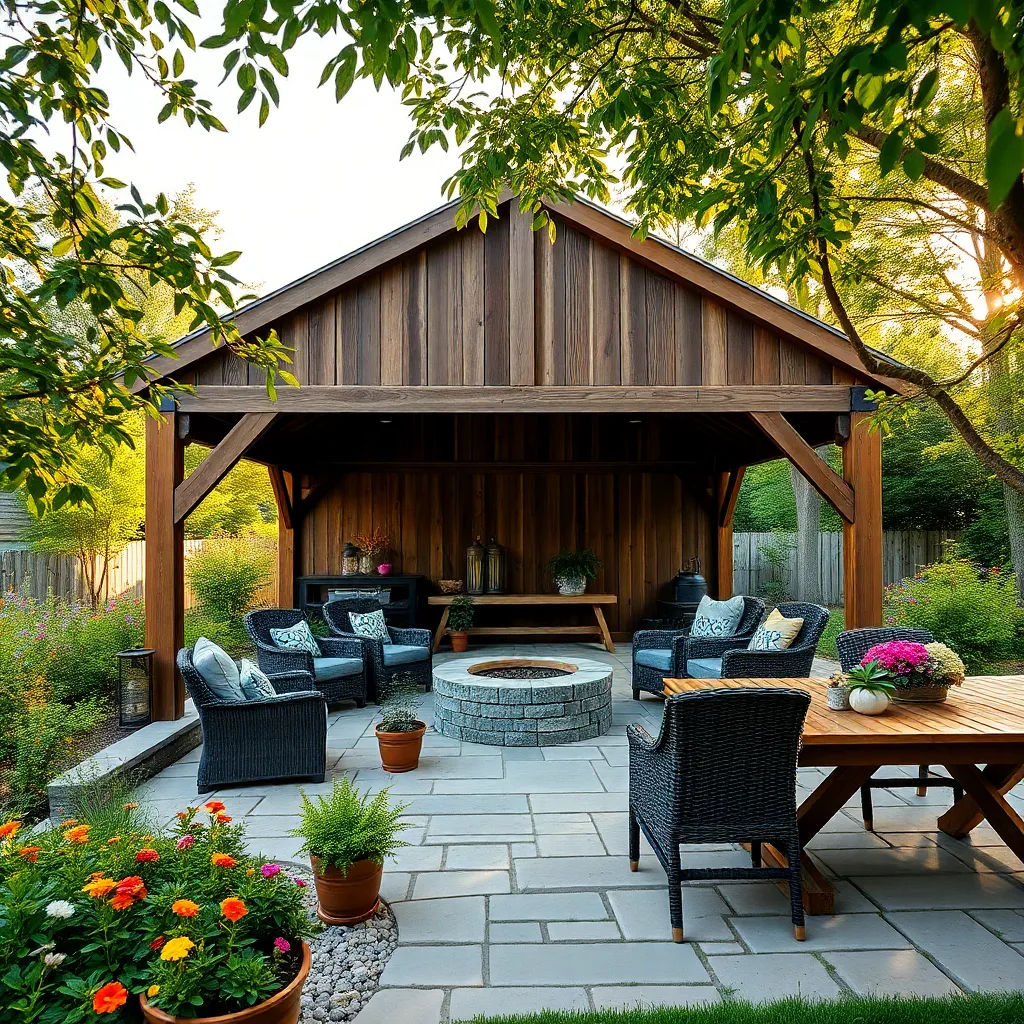
To seamlessly blend your pavilion with the surrounding landscape, consider using natural materials like wood or stone that complement the existing environment. Choose a color palette that reflects the tones found in your garden, such as earthy browns, greens, and soft grays. Beginners can start by selecting pre-treated wood for durability, while those with more experience might opt to customize their structure with live-edge wood for a truly rustic touch.
Integrate the pavilion into the landscape by incorporating design elements such as climbing plants or hanging planters that soften the structure’s lines. Advanced gardeners can create a living roof by planting drought-resistant sedums or succulents, which not only blend the pavilion into the garden but also offer additional insulation. Consider dimensions that are proportional to your outdoor space; a pavilion measuring 10×12 feet is ideal for most backyard settings, allowing for both functionality and aesthetic appeal.
Adding Rustic Lighting Features
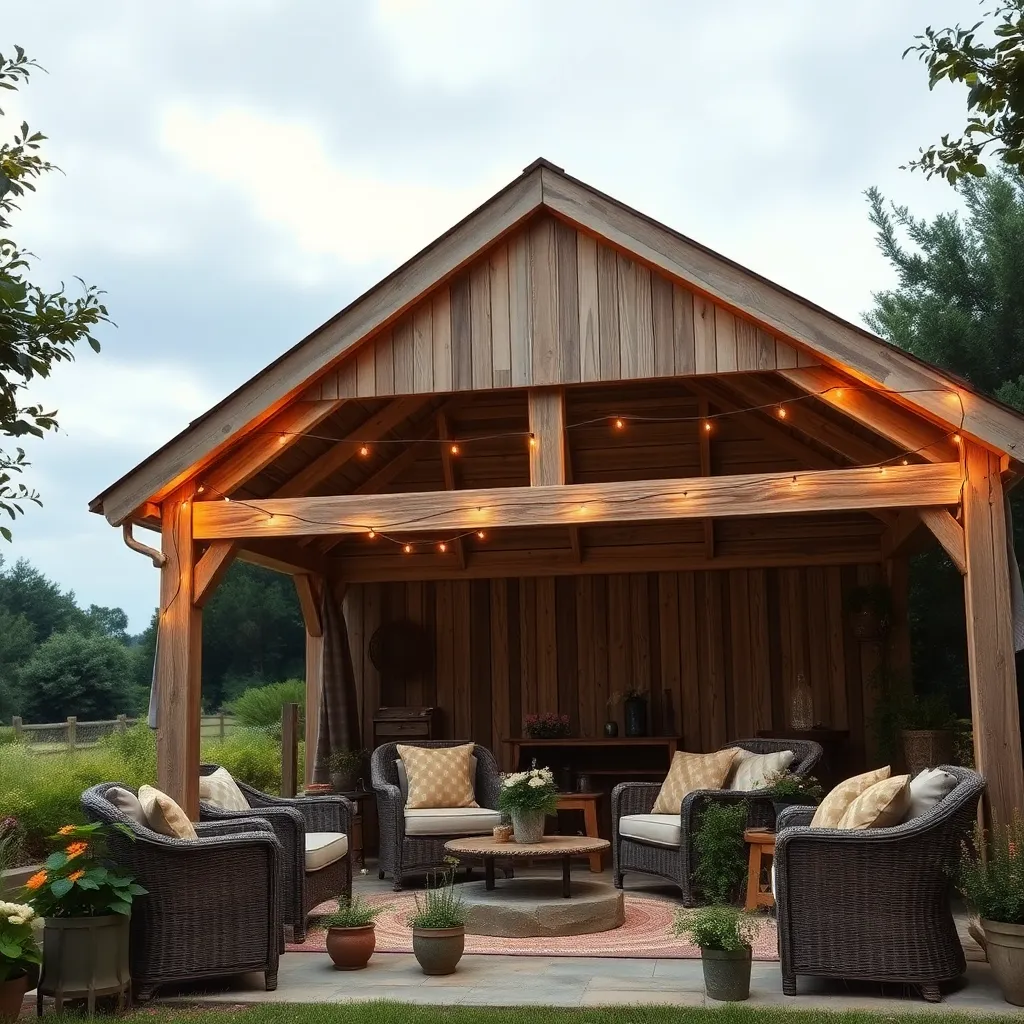
To enhance the rustic charm of your pavilion, consider adding lighting features that complement the natural aesthetic. Opt for vintage-style lanterns or Edison bulb string lights for a warm, inviting glow. These options not only provide ample illumination but also blend seamlessly with wooden beams and natural finishes. For beginners, solar-powered lights are easy to install and require minimal maintenance, making them an excellent choice for energy efficiency and convenience.
For those looking to elevate their outdoor lighting, integrating iron sconces can add an elegant touch. Consider using weather-resistant materials like galvanized steel or copper, which develop a charming patina over time. If wiring is feasible, you might explore dimmable LED options, allowing for ambiance control to match different occasions. Remember, the key is to balance function with aesthetics, ensuring that lighting features enhance both the beauty and usability of your rustic pavilion.
Ensuring Structural Stability and Safety
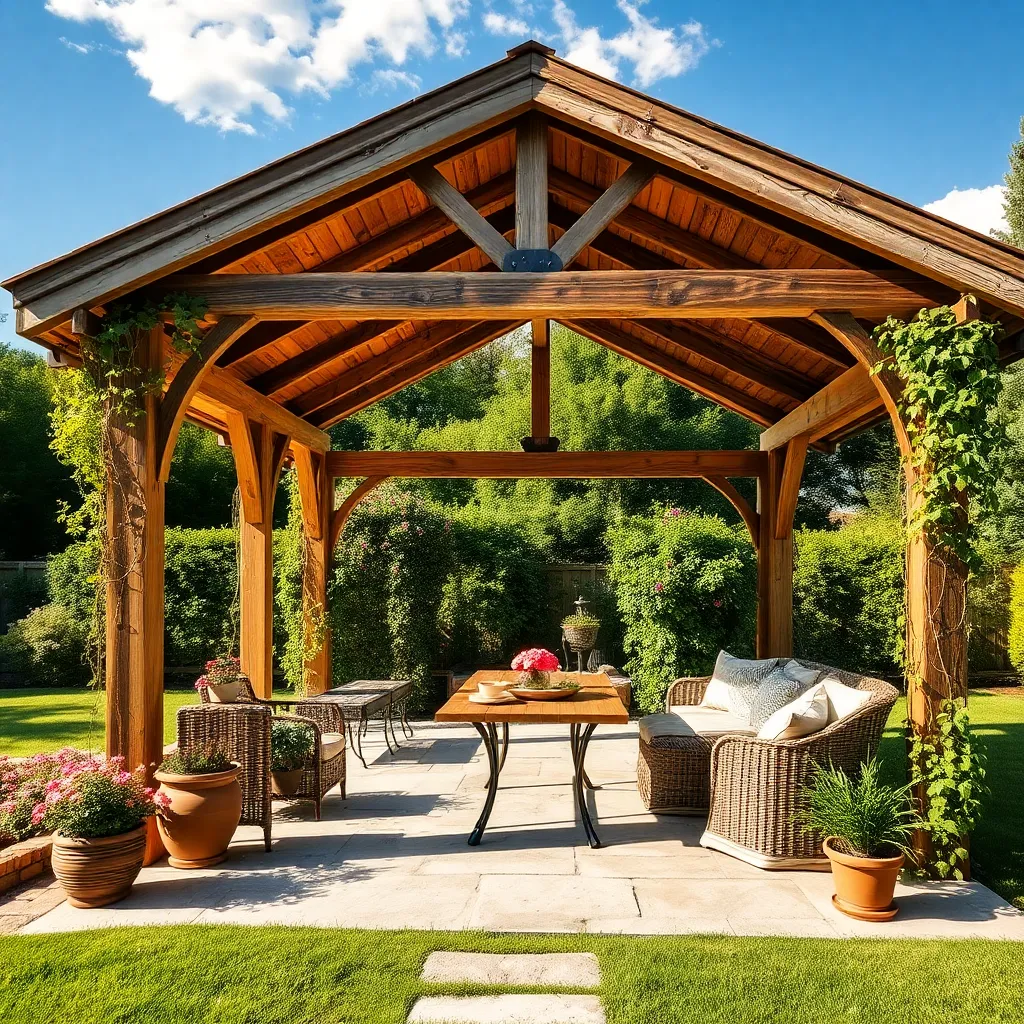
To ensure the structural stability and safety of your rustic pavilion, start with a solid foundation. Consider using pressure-treated wood or concrete piers to support the structure, as these materials withstand harsh weather conditions and prevent rot. For beginners, a simple gravel base might suffice, but advanced builders should consider pouring a concrete slab for maximum durability. Always check local building codes and acquire necessary permits to avoid complications.
For the framework, opt for cedar or redwood due to their natural resistance to insects and decay, adding longevity to your pavilion. Use galvanized steel brackets and bolts to secure joints, ensuring the structure remains sturdy over time. Advanced DIYers might explore adding cross-bracing for extra stability, particularly in areas prone to high winds. By focusing on these elements, your pavilion will not only be a charming addition to your garden but also a safe and enduring one.
Personalizing with Farmhouse Decor

To infuse your rustic pavilion with farmhouse charm, consider incorporating elements like wooden beams and reclaimed wood paneling. These materials not only enhance the aesthetic but also contribute to durability and warmth in the space. Opt for a neutral color palette, using soft whites and muted earth tones, which can be accented with galvanized metal or wrought iron fixtures for a cohesive look. Beginners can start with simple additions like weathered wooden signs or vintage lanterns, while more experienced decorators might incorporate a shiplap ceiling or a stone fireplace for added texture and function.
Adding personal touches through farmhouse decor can transform your pavilion into a cozy retreat. Consider using outdoor-friendly textiles, such as thick cotton or burlap, for cushions and table runners. These can add comfort and style without sacrificing practicality. For advanced touches, install a sliding barn door as a partition or storage solution, or hang a statement chandelier made of rustic materials like antlers or distressed metal. To maintain a cohesive design, ensure all decor elements complement each other, balancing functionality with aesthetic appeal.
Utilizing Space for Gatherings
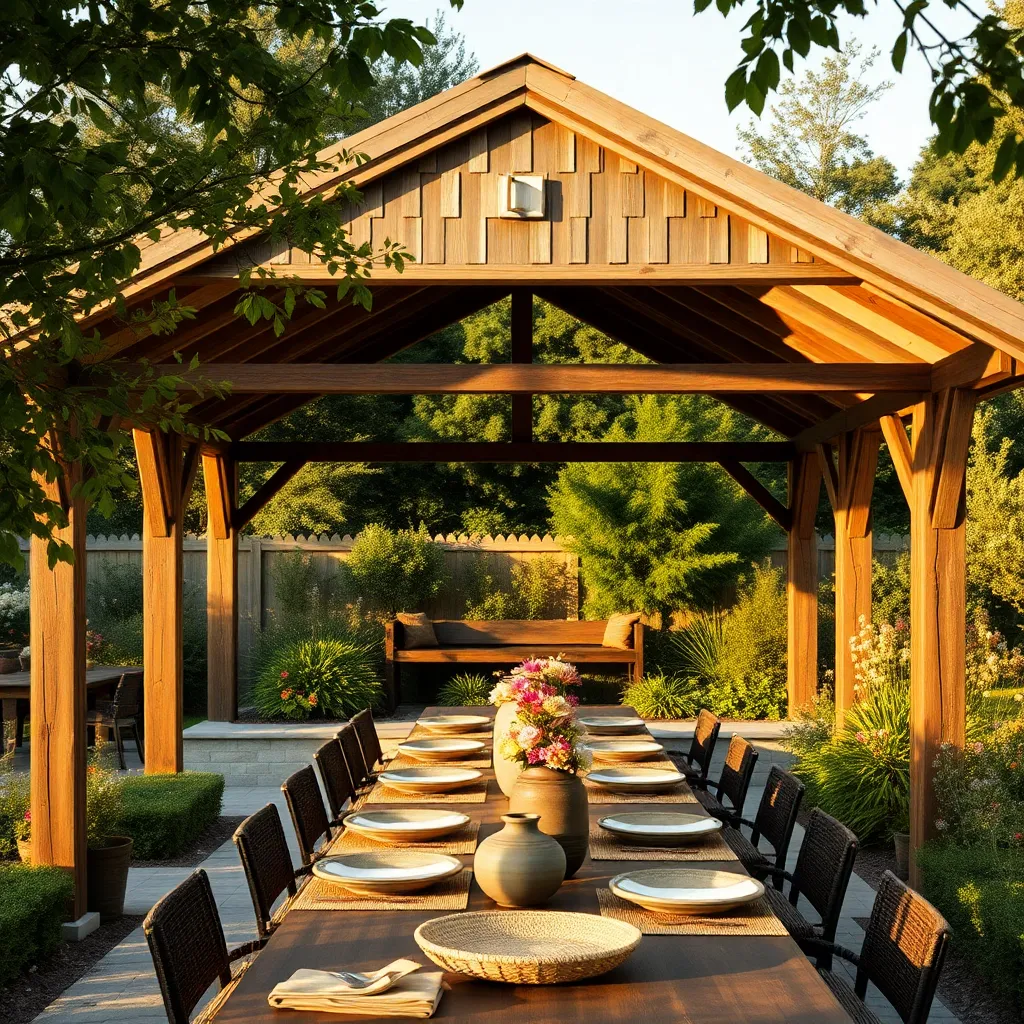
To make the most of your rustic pavilion for gatherings, consider its layout and the flow of space. Start by ensuring there is ample room for seating and movement; a minimum of 10×10 feet is ideal for small gatherings. For a farmhouse look, incorporate natural materials like reclaimed wood or stone for flooring and structural elements. This not only enhances aesthetics but also provides a durable surface that can withstand the elements. Beginners can opt for simple furniture arrangements with weather-resistant materials, while more experienced gardeners might explore built-in seating or custom fire pits for added ambiance.
Lighting is a vital design element that can transform your pavilion into an inviting evening retreat. Use a mix of string lights, lanterns, and solar options to create layers of light that highlight the natural beauty of wood beams and surrounding greenery. For beginners, start with easy-to-install solar lights along pathways and edges. Advanced DIYers might consider incorporating a chandelier or pendant lights hung from the pavilion’s beams for a dramatic effect. Additionally, ensure there’s a clear path from your home to the pavilion, using gravel, pavers, or a combination to create an aesthetically pleasing and functional walkway.
Maintaining Your Rustic Pavilion
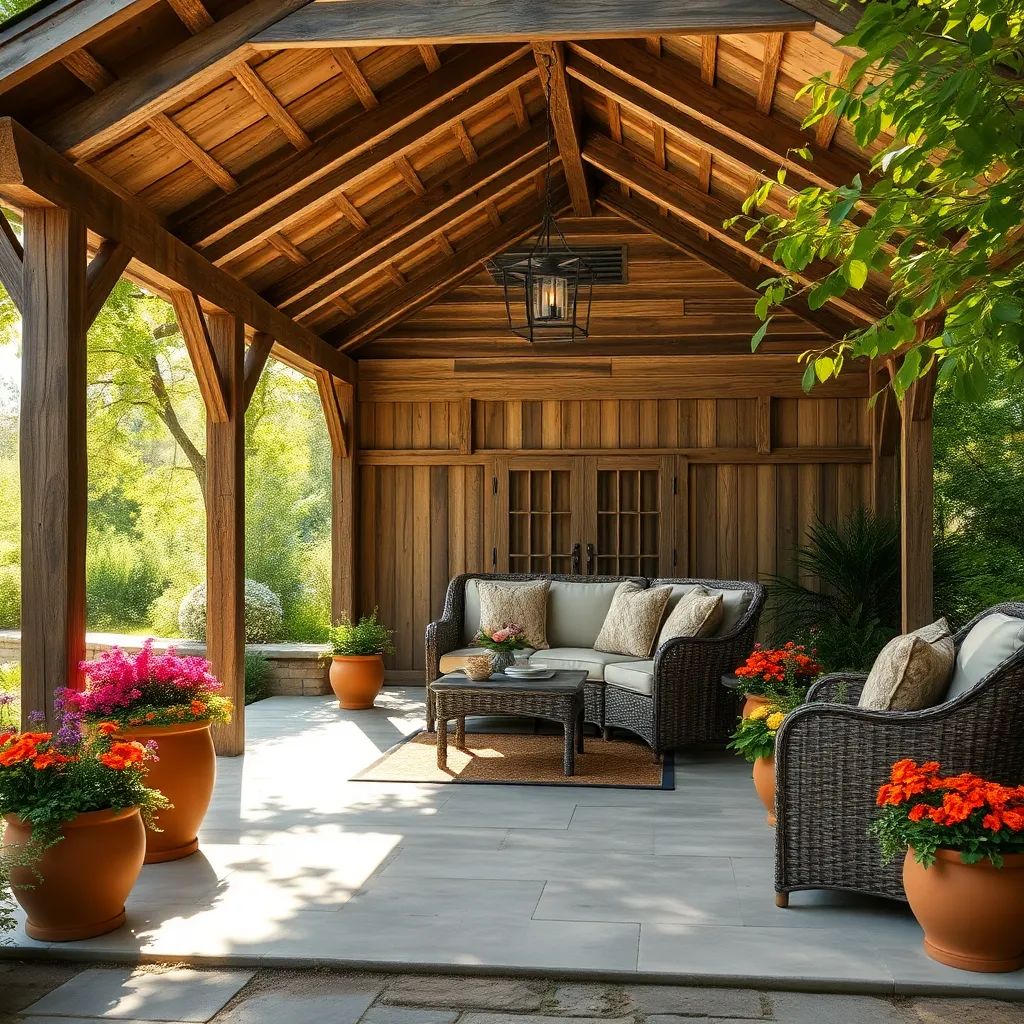
Regular maintenance of your rustic pavilion ensures it remains a charming centerpiece in your farmhouse garden. Begin by inspecting the structure for any signs of wear, such as loose screws or weakened joints, especially after harsh weather. Use a mixture of mild soap and water to gently clean wooden surfaces, followed by a protective sealant to guard against moisture and UV damage. Regular upkeep not only prolongs the life of your pavilion but also enhances its rustic appeal.
Incorporate design elements that blend functionality with the pavilion’s aesthetic. Consider adding sturdy, weather-resistant furniture and soft lighting to create a cozy atmosphere. For those with more experience, applying a natural wood stain can accentuate the grain patterns, enhancing the rustic charm.
- Choose a stain that complements your existing garden features.
- Ensure proper ventilation and drying to prevent mold.
With these steps, your pavilion will remain an inviting space for gatherings, blending seamlessly with your farmhouse garden.
Conclusion: Creating Beautiful Outdoor Spaces
In exploring the “14 Rustic Pavilions for Farmhouse Gardens,” we’ve delved into key relationship concepts such as creating shared spaces, embracing simplicity, nurturing growth, and fostering communication. These rustic pavilions serve as metaphors for building strong, supportive environments where relationships can thrive. By understanding the importance of setting boundaries, celebrating individual strengths, and prioritizing quality time together, you can cultivate a relationship that is as sturdy and inviting as a well-crafted pavilion.
As a next step, choose one concept that resonates with you and discuss it with your partner today. Whether it’s creating a cozy corner for candid conversations or planning a simple day together, taking action can strengthen your bond.
Remember to save or bookmark this article for future inspiration. It can serve as a quick reference guide when you seek fresh ideas to reinvigorate your relationship.
Looking forward, envision a relationship that grows as beautifully as a garden, nurtured by understanding and love. With each concept, you’re empowered to build a partnership that stands the test of time, much like a timeless rustic pavilion. Embrace this journey with confidence and watch your relationship flourish.

